
In this article, the author explains the process of creating the simplest tilt sensors. How to use them depends only on your imagination, but according to the author homemade will be useful to owners auto, to install additional sensors in the alarm circuit. Closing the electric circuit, they will signal a change in the angle of inclination of the car, which would be very useful if attackers decided to cash in on your wheels. For these purposes, of course, there are sensors of factory production, but their price is about 1,500 rubles, which is quite agreeable, and this project is very budgetary, and practically does not require any financial costs.
The sensors are two containers, fastened together and filled with bulk conductive material (in this case, metal balls). Inside each tank are two open electrical contacts.
The principle of operation of the sensors is as follows: when changing its angle of inclination, the bulk material changes its position and in one of the containers a circuit is closed.
Necessary materials:
- Two small glass jars;
- Two traffic jams;
- Office paper clips (or other rigid conductors);
- Small metal balls;
Glass bottles can be purchased at the pharmacy by buying any inexpensive medicine.
Metal balls were used with bearings, according to the author, they were installed in the wheels of a "schoolboy" bicycle.
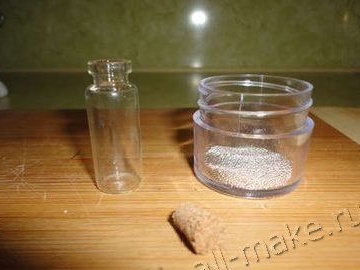
To begin with, you should fill the glass jars with metal balls, about a quarter.
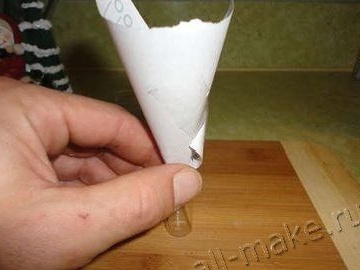
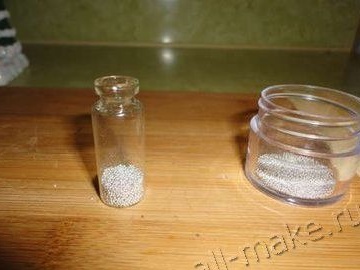
Next, the paper clips are bent, from them we make contacts:

Then we pierce the cork with staples, as shown below:
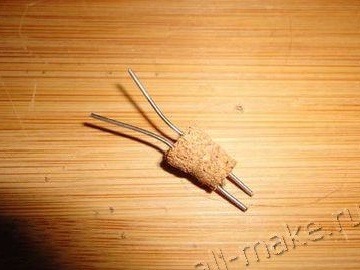
The author used corks from wine bottles, so that they fit into our bottles they need to be slightly grinded to the desired diameter.
The next step is winding the neck of the bottle with copper wire, as in the photo:
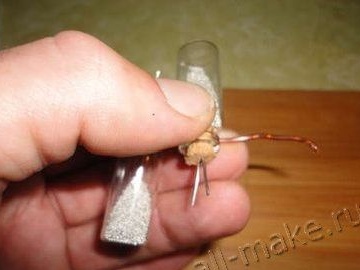
One of the contacts of each vessel must be soldered to the wire just wound:
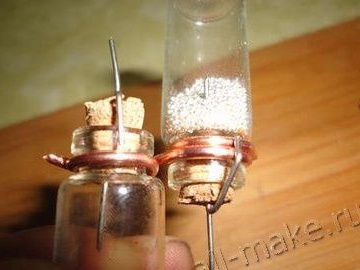
In order for the paper clip not to rust on it and the cork a layer of protective coating is applied, in this case it is paint.
The last step will be soldering to the remaining "antennae" of the wires:
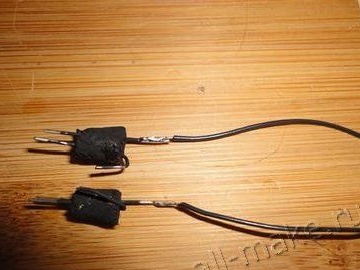
Here is the finished sensor:

